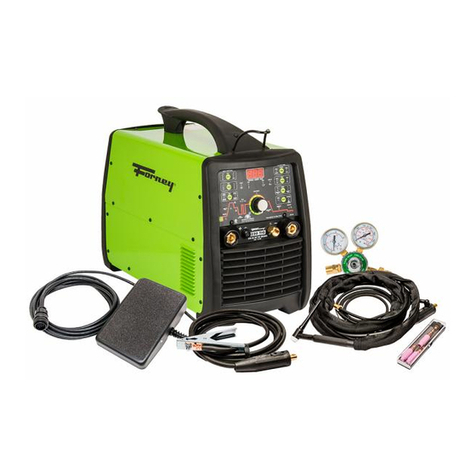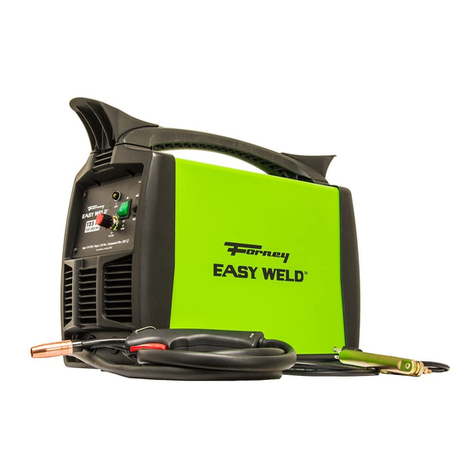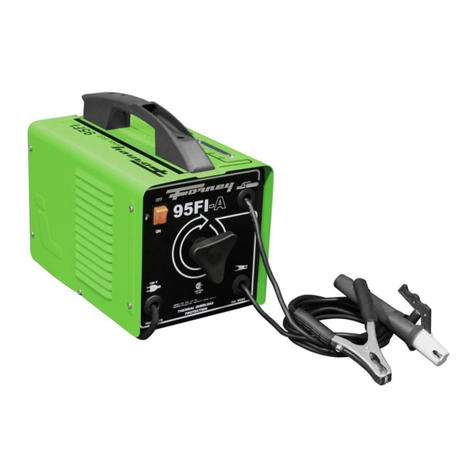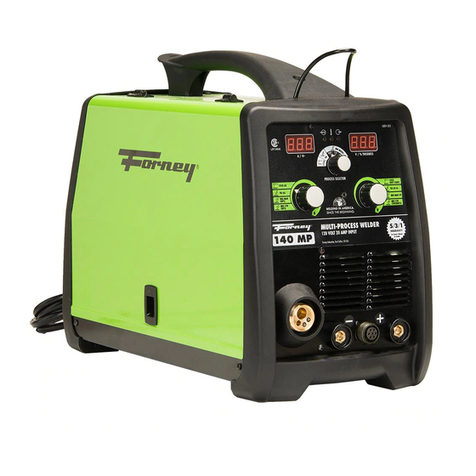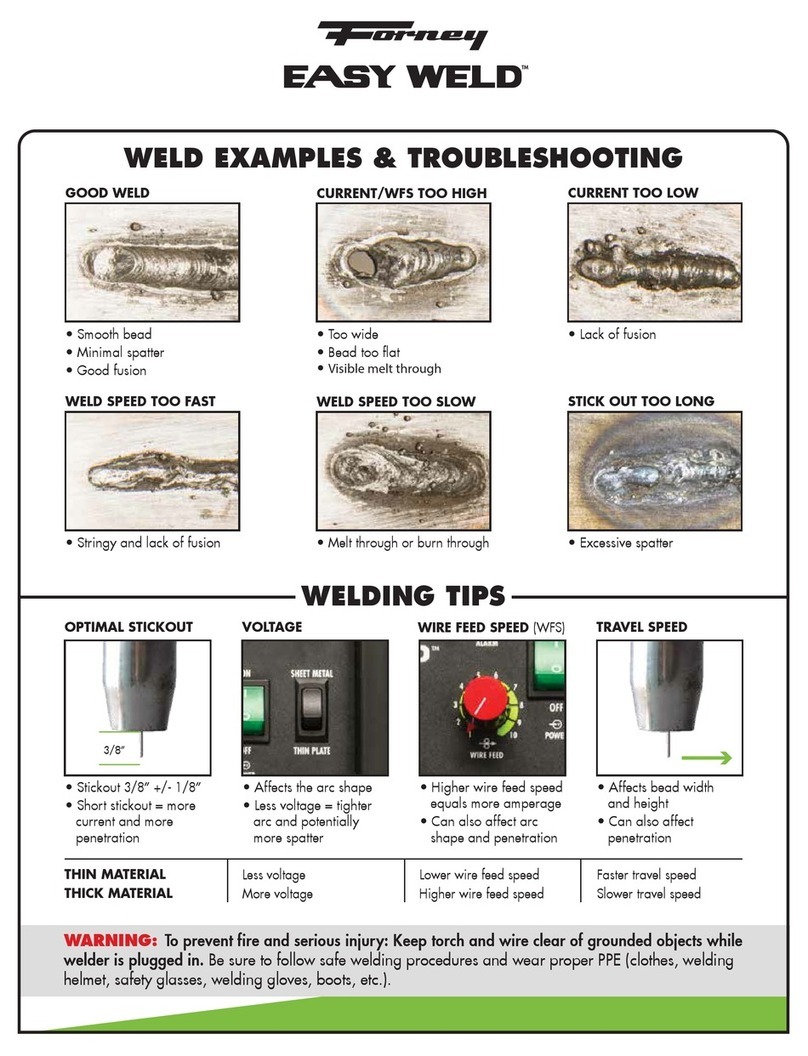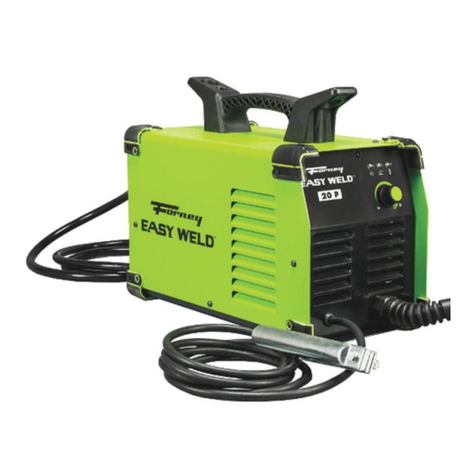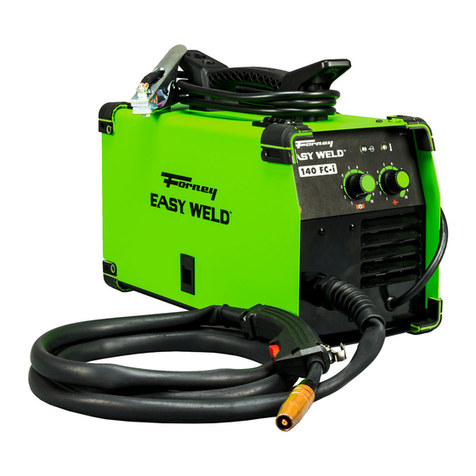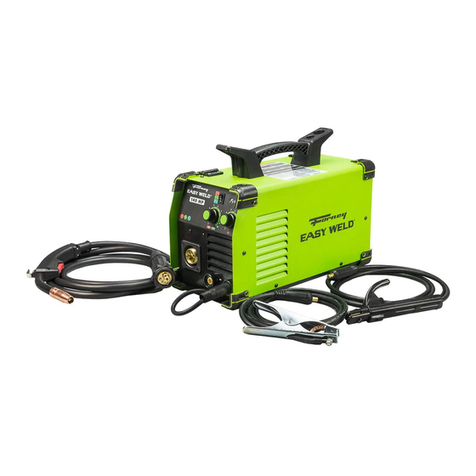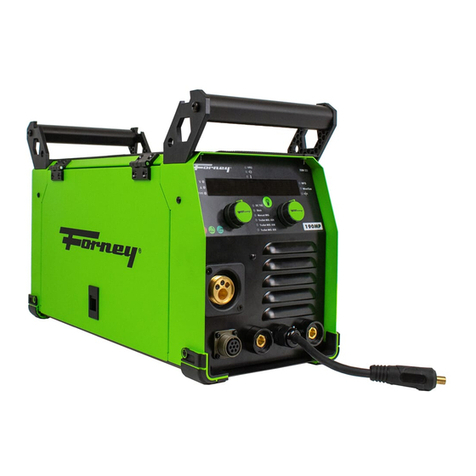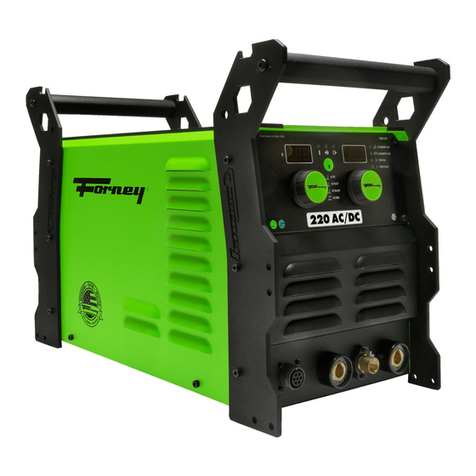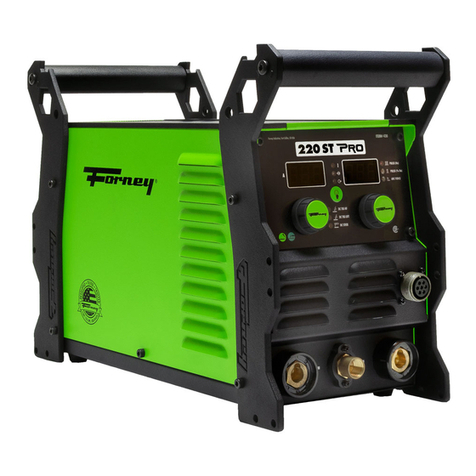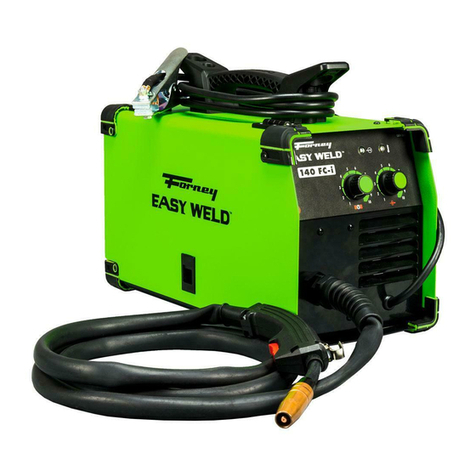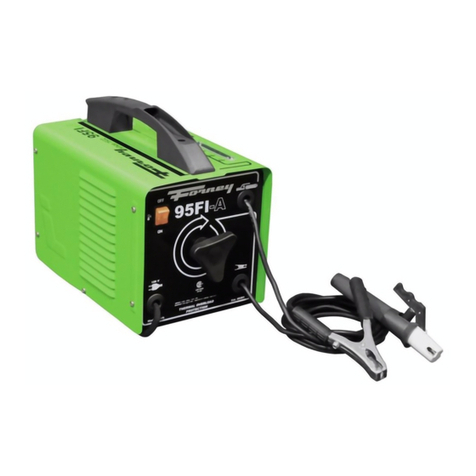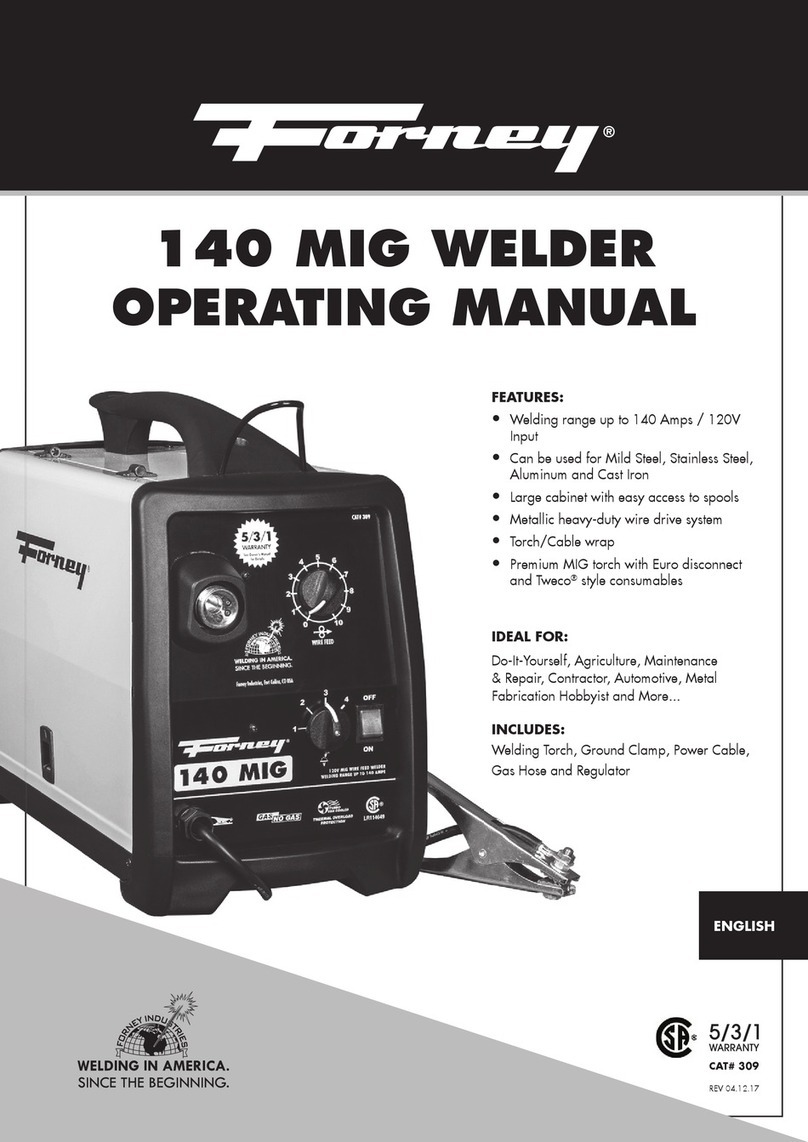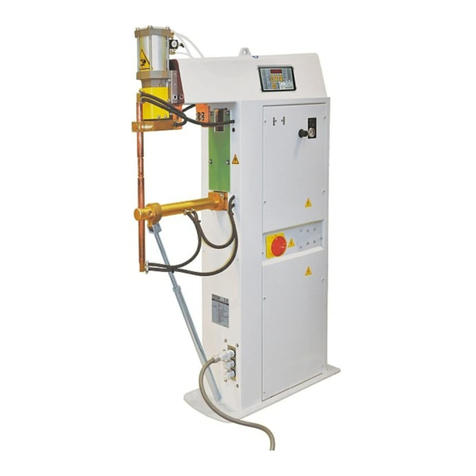Personal Protection
Welding processes of any kind can be dangerous not only to the operator but to any person situated near the
equipment, if safety and operating rules are not strictly observed.
THE WELDING ARC PRODUCES VERY BRIGHT ULTRAVIOLET AND INFRARED LIGHT.
THESE ARC RAYS WILL DAMAGE YOUR EYES AND BURN YOUR SKIN IF YOU ARE
NOT PROPERLY PROTECTED. To reduce the risk of injury from arc rays, read, understand, and
follow the safety instructions. In addition, make certain that anyone else that uses this welding
equipment, or is a bystander in the welding area understands and follows these safety instructions as
well. Helmets and filter should conform to ANSI Z87.1 standards.
• Do not look at an electric arc without proper protection. A welding arc is extremely bright and intense
and, with inadequate or no eye protection, the retina can be burned, leaving a permanent dark spot
in the field of vision. A shield or helmet with a #10 shade filter lens (minimum) must be used.
• Do not strike a welding arc until all bystanders and you (the welder) have welding shields and/or
helmets in place.
• Do not wear a cracked or broken helmet and replace any cracked or broken filter lenses immediately.
• Do not allow the uninsulated portion of the wire feed gun to touch the ground clamp or grounded
work to prevent an arc flash from being created on contact.
• Provide bystanders with shields or helmets fitted with an appropriate shade filter lens.
• Wear protective clothing. The intense light of the welding arc can burn the skin in much the same way
as the sun, even through light-weight clothing. Wear dark clothing of heavy material. The shirt worn
should be long sleeved and the collar kept buttoned to protect chest and neck.
• Protect against reflected arc rays. Arc rays can be reflected off shiny surfaces such as a glossy painted
surface, aluminum, stainless steel, and glass. It is possible for your eyes to be injured by reflected arc
rays even when wearing a protective helmet or shield. If welding with a reflective surface behind you,
arc rays can bounce off the surface and off the filter lens. It can get inside your helmet or shield and
into your eyes. If a reflective background exists in your welding area, either remove it or cover it with
something non-flammable and non-reflective. Reflective arc rays can also cause skin burn in addition
to eye injury.
• Flying sparks can injure. Wear proper safety equipment to protect eyes and face. Shape tungsten
electrode on grinder wearing proper protection and in a safe location. Keep flammables away and
prevent fire from flying sparks.
FUMES, GASSES, AND VAPORS CAN CAUSE DISCOMFORT, ILLNESS, AND DEATH!
To reduce the risk, read, understand, and follow the safety instructions. In addition, make certain that
anyone else that uses this welding equipment or is a bystander in the welding area, understands and
follows these safety instructions as well.
• Read and understand manufacturers SDS and MSDS.
• Do not weld in an area until it is checked for adequate ventilation as described in ANSI standard
Z49.1. If ventilation is not adequate to exchange all fumes and gasses generated during the welding
process with fresh air, do not weld unless you (the welder) and all bystanders are wearing air-
supplied respirators.
• Do not heat metals coated with, or that contain, materials that produce toxic fumes (such as
galvanized steel), unless the coating is removed. Make certain the area is well ventilated, and the
operator and all bystanders are wearing air-sup plied respirators.
• Do not weld, cut or heat lead, zinc, cadmium, mercury, beryllium, antimony, cobalt, manganese,
selenium, arsenic, copper, silver, barium, chromium, vanadium, nickel, or similar metals without
seeking professional advice and inspection of the ventilation of the welding area. These metals
produce extremely toxic fumes which can cause discomfort, illness and death.
• Do not weld or cut in areas that are near chlorinated solvents. Vapors from chlorinated hydrocarbons,
such as trichloroethylene and perchloroethylene, can be decomposed by the heat of an electric arc
or its ultraviolet radiation. These actions can cause phosgene, a highly toxic gas, to form, along with
other lung and eye-irritating gasses. Do not weld or cut where these solvent vapors can be drawn into
the work area or where the ultraviolet radiation can penetrate to areas containing even very small
amounts of these vapors.

